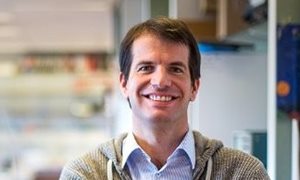3 November 2017
 Recently Mangala Srinivas, Dept. of Tumor Immunology, theme Nanomedicine received a ERA-NET grant on imaging in cardiovascular disease (€800k).
Recently Mangala Srinivas, Dept. of Tumor Immunology, theme Nanomedicine received a ERA-NET grant on imaging in cardiovascular disease (€800k).
Molecular imaging of atherosclerosis can become a key tool to understand progression of atherosclerosis to clinical disease; identify persons that need preventive therapy; test the causal role of risk factors; and guide the development of new drugs.
ERA-NET
Mangala Srinivas
Related news items

The ICI Amsterdam-Leiden-Nijmegen cancer vaccine consortium
7 April 2020 The Chemical Immunology group from Martijn Verdoes, theme Nanomedicine, joined forces with two Organic Chemistry groups and a Chemical Biology group from Leiden University, and Immunology groups at the AmsterdamUMC and the LUMC to form a consortium to develop new cancer vaccines. go to page
Three VIDI grants for RIMLS researchers
24 May 2019 Matthijs Jore, Daniele Tauriello and Johannes Textor are each to receive up to 800,000 euros to develop an innovative research theme and to build up their own research group. NWO is awarding the Vidi grant as part of the Innovational Research Incentives Scheme. go to page
ERC Proof of Concept grant for Mangala Srinivas
2 May 2019 Mangala Srinivas, theme Nanomedicine, received an ERC Proof of Concept grant 2019-1 for her project entitled: 'Ex vivo cell labeling for in vivo imaging applied to cell therapy'. go to page
Publication on nanoparticle imaging agent
22 March 2019 Mangala Srinivas, theme Nanomedicine, showed in Advanced Functional Materials that nano‐particles (radius 100 nm), are suitable for long‐term in vivo ultrasound in combination with 19F MRI and fluorescence. go to page
RIMLS awards festival Twelve winners
16 January 2019 In 5 categories RIMLS young researchers received an award and bonus during the New Year's drinks. See all photo's. go to page
